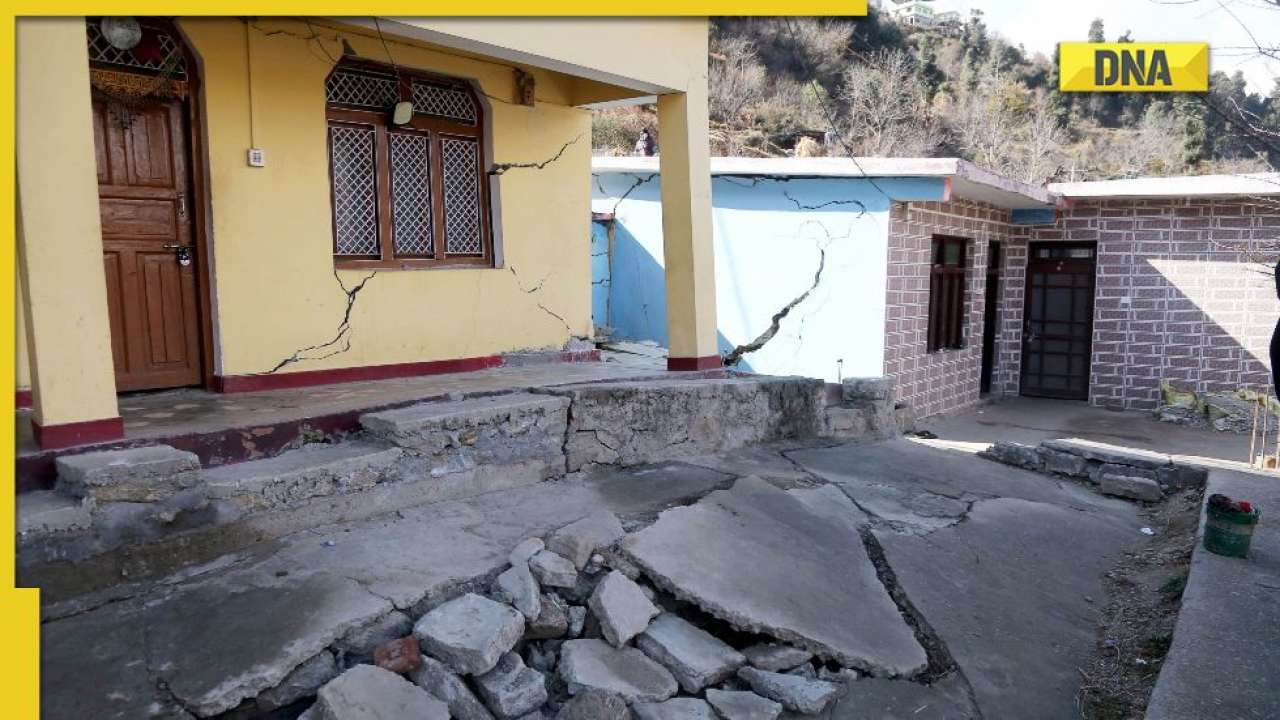
The Joshimath town land subsidence has caused consternation among environmentalists and security analysts not only in India but across the world. The town sank 5.4 cm in 12 days during December 2022 to January 2023. Experts predict a further displacement of 8.5 to 10 cm in the near future. Many houses, temples and other establishments developed cracks and a few collapsed. The incident has given a rude shock to the government, officials are flummoxed, and residents irate.
Grave questions are engaging the minds of everyone -- What is the future of the town? Will it lead to abandoning of ancestral homes and temples? Is it just the town or will it affect the holy shrine of Badrinath? Some are inclined to believe that the entire Himalayas will get affected.
The Himalayan range stretches approximately 1,500 miles (2,400 km) and passes through the nations of India, Pakistan, Afghanistan, China, Bhutan and Nepal. The Himalayan range is made up of three parallel ranges often referred to as the Greater Himalayas, the Lesser Himalayas, and the Outer Himalayas. Never before in its history has the Himalayas witnessed frenetic construction activities, as is happening now. Tunnels are being dug in the mountains by blasting, massive roads are being laid after leveling mountains, and a hydel power project is coming up. In addition, the landscape is getting marred by mushrooming resorts, hotels and townships. The mountains are continuously being ravaged by demolitions and constructions.
Who is to be blamed for the above relentless rampaging on the mountains? The citizens need to share the blame instead of castigating the government. In their zeal to make money from pilgrims and tourists, locals have been investing in hotels, restaurants and resorts. Village panchayats, municipalities and officials are busy in adjusting land records to suit the convenience of the residents in their unethical zeal to make quick money. The citizens also pressurise the elected representatives to bring “development”, for which there is constant clamour for new roads, highways, airports, bus terminals, hospitals, schools and colleges. The harried people’s representatives have to comply with the demands of the people, otherwise their future electoral prospects are doomed.
Once the infrastructure work starts, many safety requirements are compromised for cost-cutting and quick completion of work. Full page advertisements adorn newspapers, very often, with photographs of the Chief Minister and other dignitaries, claiming credit for these projects. No one spares a thought for the environment.
Militaries of both India and China are setting up underground bunkers, ammunition dumps, helipads, airstrips, roads and bridges. For this purpose the Chinese have deployed Spider excavators, tracked excavators, and heavy machinery. The Western Theatre Command (WTC) being built by the Chinese is the largest of China’s five theatre commands, covering the stretch of 3,488 kms LAC from Eastern Ladakh to Arunachal Pradesh, including Tibet and Xinjiang regions. The People’s Liberation Army has expanded its troop accommodation capacity within 100km (60 miles) of the LAC from 20,000 to 120,000 in the past two years.
The Himalayan heights are being mercilessly ravaged for major upgrades for runways, hardened blast pens to house fighter jets, additional long-range artillery and rocket systems, and superior air defence systems. The Indian side is left with no other option but to set up matching infrastructure and enhance capabilities, implying rampant construction activities. Apart from this, both Indian and Chinese armies have conducted ‘live-fire’ war drills on the mountain heights. The drills tested the long-range precision strike capabilities of various rocket artillery types against different targets. India-US joint military drills were conducted about 100 kilometres from the Line of Actual Control (LAC). All these kinds of military exercises put enormous strain on the fragile Himalayan ecosystem.
It is not just Uttarakhand and Himalayas but in Kerala and Karnataka, the sensitive Western Ghats are seeing senseless depredations. The state government’s proposal to exempt rural areas from the Karnataka Land Grabbing Prohibition Act will deal a death blow to Western Ghats forests, which have reported 77 per cent of all forest land encroachments in Karnataka. As per the Forest Department data, 1.58 lakh acres of the 2.04 lakh acres of forest land under encroachment in the state are spread across eight districts in the Ghats region. In Kerala also rampant encroachment of Western Ghats forests by certain communities led by religious leaders, is sought to be regularised, and the Government is under great pressure to reject the Kasturirangan Committee Report.
People want to encroach forest land and mountains to make easy money, by threatening political parties with vote bank politics. When nature is constantly abused and ravaged senselessly, retaliation comes in the form of earthquakes, floods, and droughts. Mankind cannot restore, repair, and rebuild mountains and forests. We need to learn lessons from tiny Bhutan, about how to live in harmony with nature.
READ | DNA Explainer: Why Nepal has witnessed several plane crashes, what makes its sky dangerous?
The author of the article is Dr G Shreekumar Menon IRS (Rtd), Ph.D. (Narcotics), Former Director General, National Academy of Customs, Indirect Taxes & Narcotics
(Disclaimer: The views expressed above are the author's own and do not reflect those of DNA.)